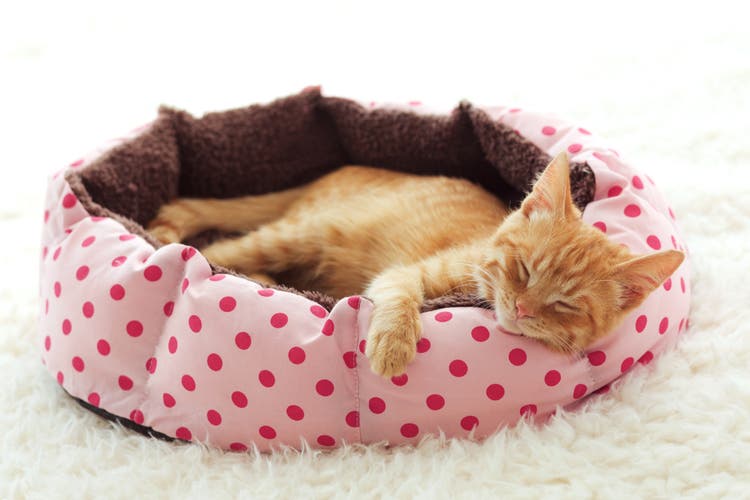Feline distemper may put your cat or kitten at risk.
Feline distemper, otherwise known as feline panleukopenia, is a viral disease that can cause serious illness in your cat — and especially in kittens. Most kittens are routinely vaccinated for feline distemper, so you may have already taken the right steps to protect your cat. But it’s important to understand how your pet may still be at risk.
Here’s what you need to know about distemper in cats.
How Do Cats Get Feline Distemper?
The feline distemper virus is a highly contagious virus. However, the disease occurs much less frequently in domestic cats than it used to, thanks to the widespread use of the feline distemper vaccine. Kittens and cats that have not been vaccinated are at the highest risk for developing feline distemper. But other things can also play a factor, including:
- Living in close contact with other cats, such as in a shelter, cattery or feral colony
- Coming into contact with an infected cat’s bodily fluids, such as saliva or respiratory discharge from sneezing
- Sharing bowls, bedding or a litter box with an infected cat
- Frequently spending time outdoors (though indoor cats are also at risk)
It’s very important to keep your cat away from other cats that may have been sick recently — even if they appear to be feeling better. This is especially true if you are not familiar with another cat’s medical or vaccination history.
What Are the Symptoms of Feline Distemper?
Infected adult cats often show minimal or no symptoms of feline distemper, but when kittens are infected, they often have symptoms such as:
- Nose or eye discharge
- Pale or white gums
- Lethargy
- Weakness
- Loss of appetite
- Dehydration
- Swelling around the neck, armpits or the backs of legs (enlarged lymph nodes)
- Tremors
- Abnormal gait
- Loss of balance
Kittens affected by feline distemper can become severely ill, a condition known as “fading kitten syndrome.” Cats typically show symptoms two to seven days after exposure to the virus, but in some cases, cats can die within 12 hours. If you notice any changes in your kitten’s health, see your veterinarian right away so they can receive prompt treatment.
How Do You Treat Feline Distemper?
Unfortunately, there is no known cure for feline distemper. Treating this condition usually involves hospitalization and attentive nursing care while the disease runs its course. If your cat is diagnosed with feline panleukopenia, your veterinarian will decide a treatment plan based on clinical signs. Many cats that test positive appear normal and may require no further treatment. If your cat is sick, your veterinarian will likely recommend:
- Fluids to prevent dehydration
- Medication to alleviate nausea and vomiting
- Easily digestible foods to provide energy and nutrition
- Antibiotics to treat secondary infections
Feline distemper can worsen rapidly and can lead to death in certain cases. Even if a cat receives treatment and survives, they may have permanent damage caused by the virus, such as difficulty walking. For cats that test positive and show no clinical signs, they can go on to live normal lives once recovered.
How Can I Protect My Cat from Feline Panleukopenia?
The feline distemper vaccine is highly effective and is considered a core vaccine, which means it’s strongly recommended for all cats, regardless of age or lifestyle. Remember that if your cat had the feline distemper vaccine series as a kitten, they will still need periodic boosters as adults to ensure they stay protected.
In addition to vaccination, be sure to schedule routine wellness visits with your veterinarian to monitor your cat’s general health and catch potential problems early. With good preventive care, you can help protect your pet against feline distemper and its risks.
Related Articles

New Cat or Kitten: Our Downloadable Guide
Thinking about adding a feline to the family? There are so many emotional, social and physical benefits to owning a cat. Check out our free guide, also available to download!






